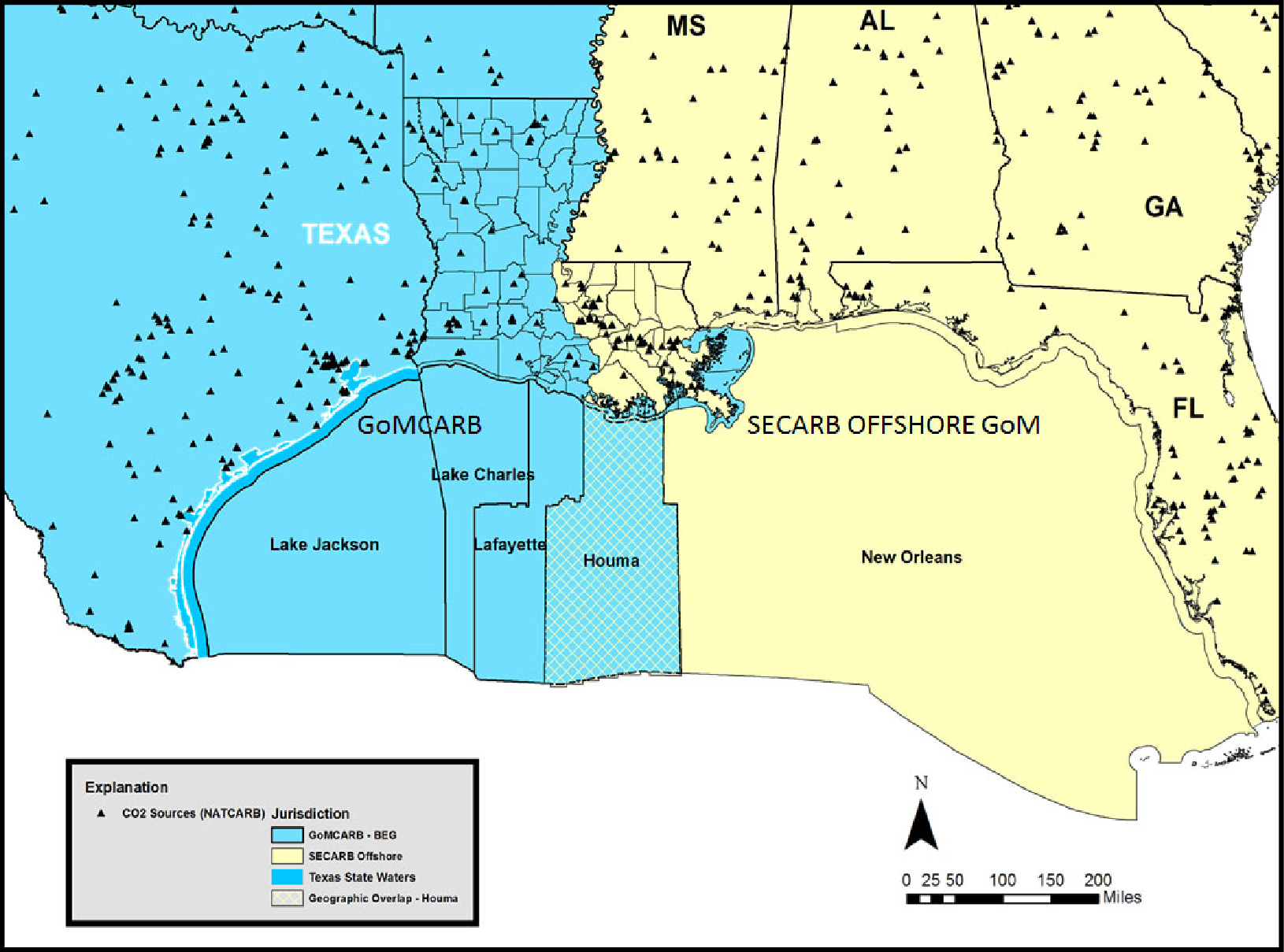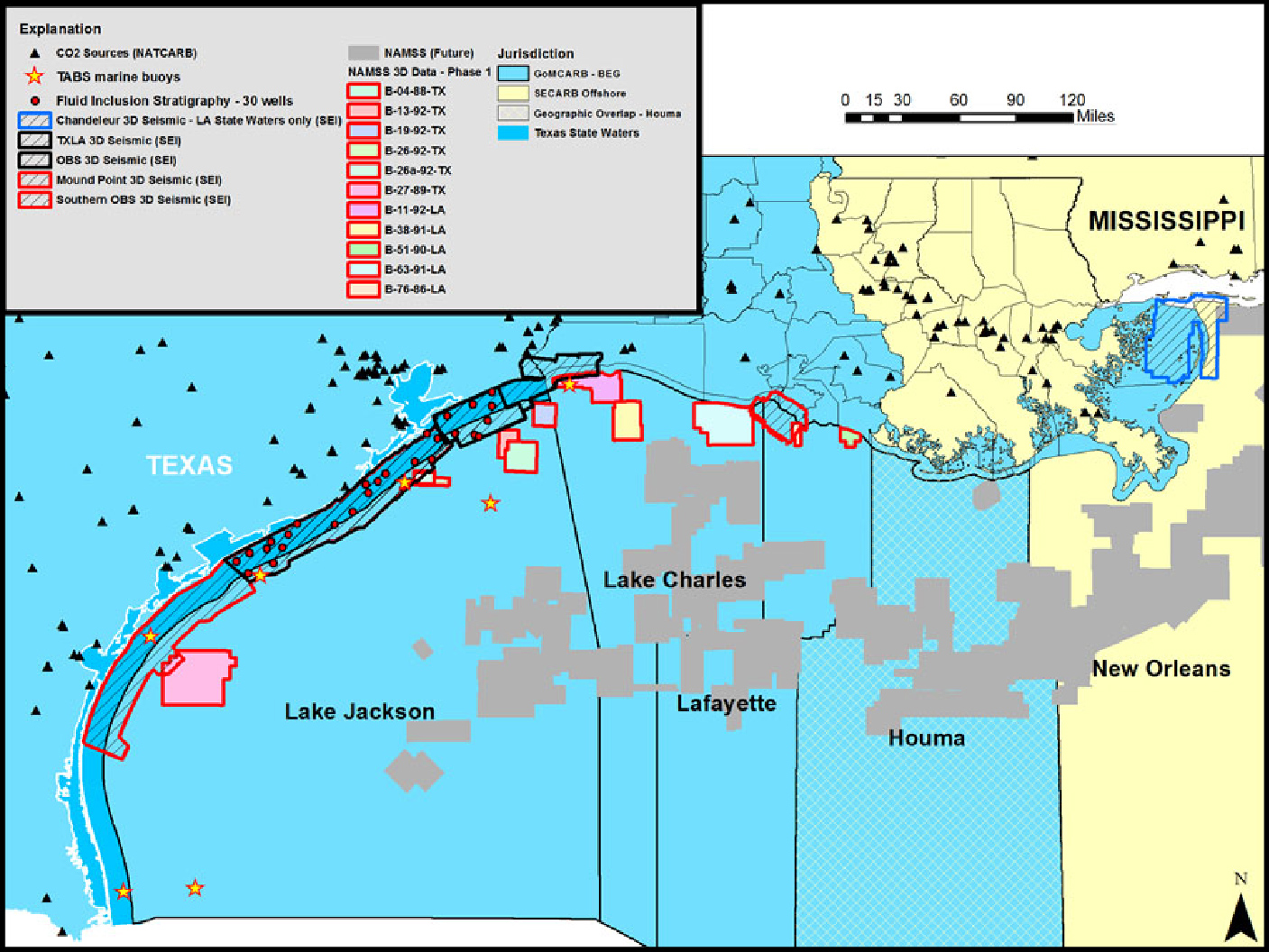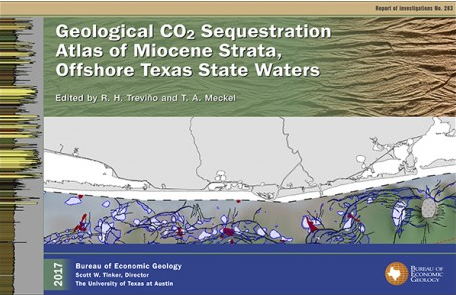GoMCarb Study Area


Map of the northern Gulf of Mexico (GoM) showing the initial primary geographic region of focus for assessing possible CO2 storage sites in the GoMCarb partnership (blue) and the companion SECARB Offshore GoM partnership (yellow). The cross-hatched region (Houma district) comprises an area of shared interest with SECARB Offshore. Onshore CO2 sources (triangles) will be matched to offshore CO2 storage sites.

Regional geologic datasets identified allow for extensive characterization and study to identify the strongest candidate sites for offshore CO2 storage.
Sources of Industrial CO2
Onshore sites in Texas and western Louisiana
Western Louisiana parishes include:
Saint Mary, Saint Martin, Iberia, Lafayette, Acadia, Vermillon, Jefferson Davis, Calcasieu, Cameron, Saint Landry, Evangeline, Allen, Beauregard, Rapides, Vernon, and Avoyelles
Potential Offshore Sinks for Storage
Underneath the seafloor of Texas and Louisiana State waters
Texas and western Louisiana Offshore Continental Shelf (OCS)
Districts include:
Lake Jackson, Lake Charles, Lafayette districts, and Houma (overlap with SECARB)
High Island, West Cameron, East Cameron, Vermilion, South Marsh Island, Eugene Island
Reservoir
Using one or more selected field sites, a more precise model will be built to better define the limits on capacity as a result of overpressure, lateral migration, or overfilling.
Sub-Basin
Using 3D seismic volume data from the TXLA project, GoMCarb will study how multiple reservoir storage projects interact within one basin system, focusing on pressure influences on stratigraphy and overall structure.
Laboratory Simulations of Predictions
To quantify CO2 trapping as it microscopically moves within dipping compartments typical of the gulf, GoMCarb will engineer laboratory sand packs that reflect the heterogeneity of the gulf’s geologic settings to quantify the structural-, capillary-, and dissolution-trapping of CO2 during fluid flow at the sediment pore-scale. Lab simulations will build confidence in numerically-simulated predictions.
Economic
To anticipate the costs associated with subsurface carbon storage, GoMCarb will conduct literature reviews and economic modeling to identify revenue streams and profit points for more-expensive but more-plentiful offshore storage.
Back to GoMCarb main page
Next - Offshore Storage Resources



